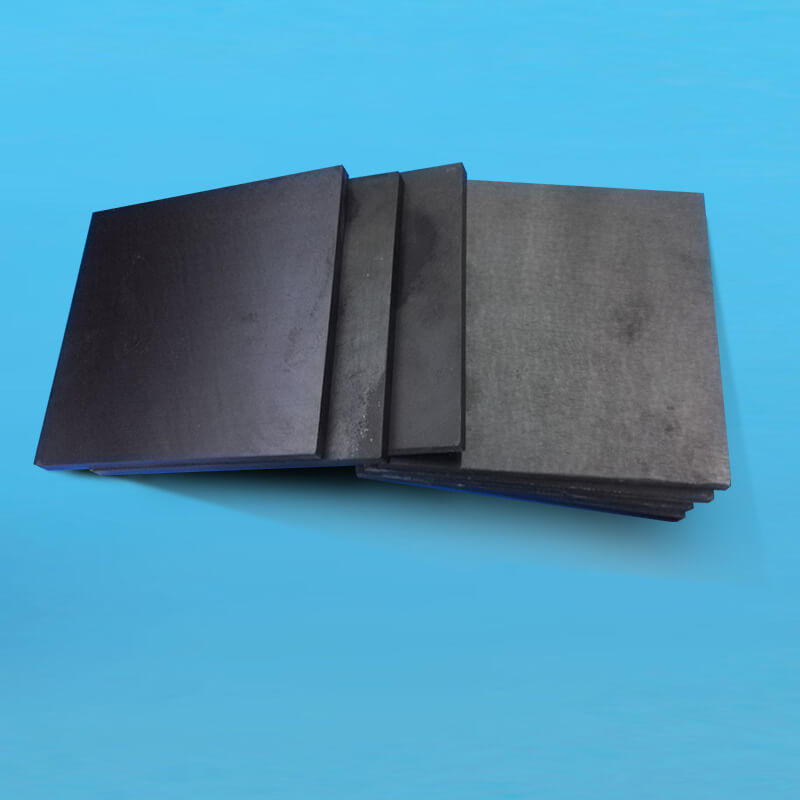Introduction of Silicon Nitride Ceramic Materials
Silicon nitride (Si3N4) offers excellent thermal shock resistance and high temperature strength, ideal for automotive engines, gas turbines, and aerospace applications. It’s used in turbocharger rotors, diesel engine glow plugs, and electrical connectors, providing long-term stability in high-temperature and high-pressure conditions.
E-mail:sales01@hkceramic.com

| Plate material mm (L, H, and W can be selected as needed, customization supported) | ||||||||||||
| L | 3 | 5 | 8 | 10 | 12 | 15 | 18 | 20 | 22 | 25 | 28 | More (Customizable) |
| W*H | 100*100 | 90*140 | 95*145 | 150*150 | 160*160 | 122*290 | 110*275 | More (Customizable) | ||||
| Rod material mm (W, Ø can be selected as needed, customization supported) | ||||||||||||
| Ø | 0.5 | 0.8 | 0.9 | 1 | 1.5 | 2 | 2.5 | 3 | 3.5 | 4 | 4.5 | More (Customizable) |
| W | 60 | 100 | 120 | 200 | More (Customizable) | |||||||
Silicon nitride (Si3N4) is an advanced engineering ceramic material known for its excellent high-temperature performance and superior mechanical properties.
1. High Strength and Fracture Toughness at High Temperatures
Silicon nitride exhibits high strength and excellent fracture toughness at elevated temperatures, making it an ideal choice for many high-temperature applications.
- Automotive Engine Components: Silicon nitride is widely used in high-temperature structural components of automotive engines such as piston rings, turbocharger turbine blades, and fuel injectors. Its high strength and wear resistance allow these components to operate stably in high-temperature, high-pressure, and harsh environments, thereby enhancing engine efficiency and reliability.
- Gas Turbine and Combustion Chamber Components: Silicon nitride is also extensively used in gas turbine and combustion chamber components such as turbine bearings, combustion chamber liners, and nozzles. Its high temperature strength and corrosion resistance enable these components to operate reliably in high-temperature and high-pressure environments, improving equipment performance and longevity.
2. Low Thermal Expansion Coefficient and Extremely High Thermal Shock Resistance
Silicon nitride features a low thermal expansion coefficient and extremely high thermal shock resistance, making it perform exceptionally well in high-temperature environments.
- Low Thermal Expansion Coefficient: The low thermal expansion coefficient of silicon nitride means it exhibits minimal deformation at high temperatures, making it particularly suitable for applications requiring stable dimensions and shapes, such as high-temperature furnaces and heat treatment equipment.
- Extremely High Thermal Shock Resistance: Silicon nitride demonstrates extremely high thermal shock resistance, maintaining its strength and integrity even under rapid temperature changes. This characteristic makes it highly beneficial for applications that undergo frequent temperature cycling, such as thermocouples and spark plug insulators.
The unique combination of properties in silicon nitride allows it to be widely used in high-temperature, high-pressure, and harsh environments. From the automotive industry to the energy sector, and from aerospace to industrial manufacturing, silicon nitride plays a crucial role in providing reliable material solutions for various high-temperature structural components. Its outstanding performance and durability not only enhance equipment efficiency and reliability but also drive technological advancement and innovation.
| Material Properties & Physical Performance | Units | Typical Values |
| Density | g/cm3 | >3.2 |
| Hardness | HRA90 | |
| Vickers Hardness (Hv50) | HV0.5 | >1550 |
| Modulus of Elasticity | Gpa | 290 |
| Flexural Strength | Mpa | >600 |
| Compressive Strength | Mpa | 2500 |
| racture toughness | Mpam1/2 | >6.0 |
| The rmodynamic property | Units | Typical Values |
| Maximum Use Temperature | ℃ | 1200 |
| Thermal Conductivity | W/(m·K) | 15-20 |
| Thermal Expansion Coefficient | 10-6/℃ | >3.1 |
| Thermal Shock Resistance | △T℃ | 500 |
| Specific Heat Capacity | KJ/kg.K | 700 |
| Electricl Protperties | Units | Typical Values |
| Dielectric Strength | KV/mm | 1 |
| Dielectric Constant | ||
| Volume Resistivity at 20°C | Ω.cm | 1.0×1012 |
*For more details, please feel free to contact our company.
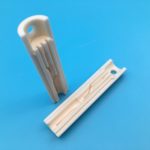
Alumina ceramic protective sleeve
Material:Alumina ceramics
Describe:Precision ceramic custom products like alumina ceramic protective sleeves for soldering irons, electrically insulating heating ceramic tube sleeves, and high-temperature resistant ceramic wire connectors offer exceptional thermal stability, electrical insulation, high-temperature stability, and wear resistance. Used extensively in soldering irons, heating equipment, electronics, and more, these ceramics are crucial for applications needing high temperature resistance, electrical insulation, and wear resistance.
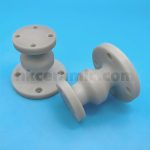
Aluminum Nitride Ceramic Structural Components
Material:Aluminum Nitride Ceramics
Describe:Customized aluminum nitride (AlN) ceramic structural components offer precise shapes and robust connections for high thermal conductivity and reliability in industrial equipment and electronics.
Ultra-large Silicon Nitride Ceramic Sleeves
Material:Silicon Nitride Ceramics
Describe:Discover a silicon nitride ceramic sleeve with precise machining and a smooth outer surface, ensuring reliability in high-performance applications. Ideal for large-scale mechanical equipment like pumps or high-pressure systems, silicon nitride offers exceptional mechanical strength, high temperature resistance, thermal shock stability, and abrasion resistance.
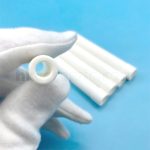
96% alumina ceramic tube
Material:Alumina ceramics
Describe:96% alumina ceramic tube, known as insulating industrial ceramic or high-temperature resistant precision sapphire ceramic, excels as a high-performance product in various industries. Its exceptional physical, mechanical, and thermal properties make it ideal for demanding environments like high temperature, high pressure, and high wear scenarios.

Custom Alumina Ceramic Rods
Material:Alumina ceramics
Describe:Alumina ceramic rods for electric heating elements, ideal for high-temperature applications. They act as supports or insulators, distributing heat and preventing direct current contact, ensuring safety and efficiency in heating devices.
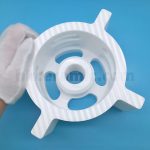
Sandblasting Machine Zirconia Ceramic Rotor
Material:Zirconia Ceramics
Describe:Custom zirconia ceramic rotor designed for sandblasting machines, featuring multiple through-holes and a central threaded hole for easy installation and secure attachment to the drive shaft. Zirconia's mechanical properties ensure durability under high loads and speeds, with minimal wear for extended service life.

